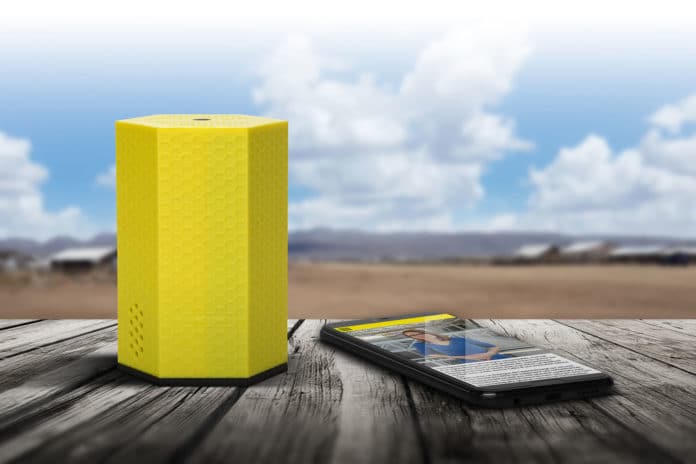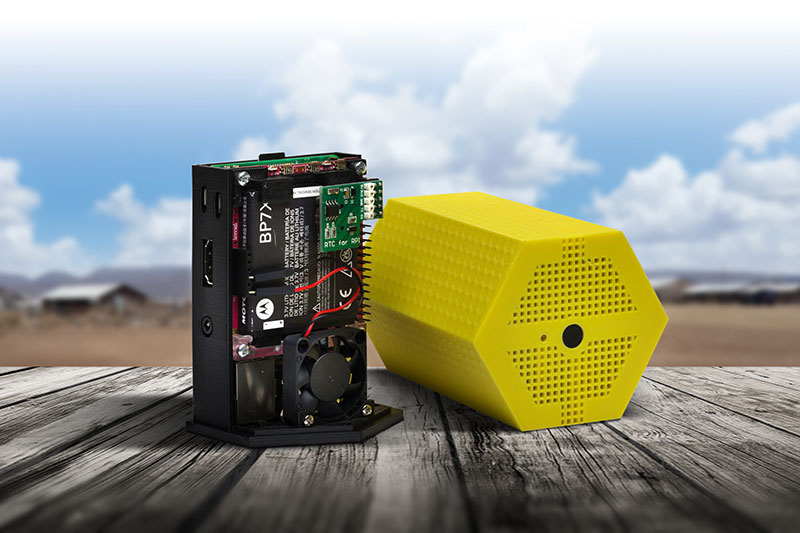Digital tools are employed on a massive scale in education to enhance teaching methods but often require an internet connection. It is always a big, challenging question: how to send documents, watch educational videos, or work collaboratively in regions without internet coverage or electricity?
Addressing this problem, researchers in learning and teaching technologies (TECFA) in UNIGE’s Faculty of Psychology and Educational Sciences (FPSE) have found innovative solutions to support learning and teaching. They developed a standalone box called the Beekee Box, which can generate a wireless network. This will help users to log onto the learning platform without needing the internet or electricity supply.
The Beekee Box is a portable learning platform that works without the internet. Turn on the box to create a local wireless network and let the learners connect to it using their own devices to retrieve documents, collaborate in real time, and follow complete training courses.
Anyone can connect to the Beekee Box’s wireless network via a smartphone, computer, or tablet to access educational content. When the trainers are overseas in refugee camps or war zones, the Beekee Box helps them take their teaching materials with them, using it as a teaching platform with learners on site.
“It’s as though users were browsing the educational platform on the web but without the need for the internet or power grid,” says Vincent Widmer, a TECFA researcher and the man behind the Beekee Box. “Anyone logged on can follow entire training programs, carry out assessments, access documents, or interact with their peers in real-time.“
How to use it?
The Beekee Box is very easy to use. Teachers can import all the necessary educational material onto the Beekee Box from their computers. Once it is done, they are free to carry the box; in other words, they carry their teaching materials worldwide.
Users only need to connect their mobile devices to the local network generated by Beekee Box to access and stream content.
Stéphane Morand, a system engineer at TECFA, explains, “Teachers can restrict their interactions with students just to the box network, without the data being shared over the internet. Everything remains confidential and compartmentalized on the Beekee Box, which is a huge asset in protecting personal data!“
Construction:
The Beekee Box’s casing is made of durable, recyclable plastic, and the unit consists of a microcomputer and battery module. It is 10 cm high and 6.5 cm wide and can hold up to 256 GB of data with a battery life of around 3 hours – or over 10 hours with an external battery, which can be recharged using solar energy. It allows a range of up to 50 meters (WiFi range will vary depending on site conditions). Up to 25 concurrent users can connect to it.
“It takes about 9 hours to print the box with our 3-D printers and 20 minutes to put it together,” says Julien Venni, another TECFA researcher. “If you include the programming – which is customized to meet the needs of users – a Beekee Box is ready in about 10 hours for a material cost at present of about 150 Swiss francs.“
The team is developing its own software based on open-source technologies, such as the MoodleBox project by Nicolas Martignoni from Friborg, which they modify to suit their requirements. Everyone can build their box and program it or use the services of the Beekee Box team.
Testing:
The researcher team is currently running a trial in the Kakuma refugee camp in Kenya as part of a collaboration with UNIGE’s InZone project, which develops and approves innovative solutions to help refugees follow university courses and obtain ECTS credits.
The standalone box is not limited to refugee camps only; it can be used in other contexts, such as for providing assistance in crisis situations, such as during the Ebola epidemic in Congo. “We are currently working with Médecins Sans Frontières to help doctors provide crisis management training and to send recent medical guides,” says Vincent, before adding, “Our goal is to make our educational, technological, and research skills available to analyze the context and provide tailor-made solutions.“


